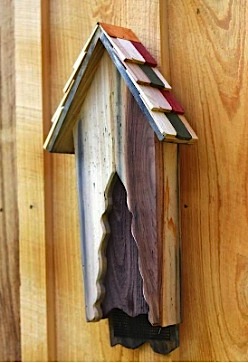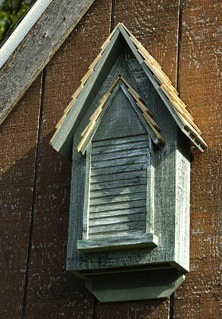-
Attract Them and Offer Roosts with Bat Houses
They make some cool shelters these days, from vintage to Victorian, recycled plastic, even kits to build your own bat houses. You can try your luck at attracting bats without a big investment. But why would anyone want to attract them? One word – beneficial would sum it up best!
Bats are major pollinators and seed spreaders. Natural insect control is another huge advantage to hosting these friendly mammals (yes, they’re mammals). Even small bat colonies will consume thousands of mosquitoes and other pests nightly.
Habitat plays a key role in attracting any friendly fliers to your place. This holds true for butterflies, hummingbirds and songbirds too. If pesticides are being used, stop! They’re harmful to the to the environment, wildlife and the ecosystem in general. Pristine, manicured lawns are becoming passe, more naturalized areas are in style. This doesn’t mean jungle… it involves use of native plants, naturalized beds, and varied habitat.
You can attract bats by offering places for them to roost (other than your attic vents). Bat houses needn’t be plain square boxes, but stylish shelters that complement the landscape. The two shown are handcrafted in the USA, and made from solid cypress.
If water exists on your property, there’s a strong likelihood bats will use your shelters. Being near a creek, stream, or pond is preferable. They require a stable environment, steady temperatures within their roosts. Facing the houses south will allow full sun exposure to warm the boxes. Two bat houses are even better, facing them in different directions and allowing for varying temperatures. Leaving an outside light on at night may also assist in bringing bats to your place. As bugs swarm the light, bats will follow if they’re currently near your property.
Height is important when installing the houses as well. Some say 10 feet is sufficient, others claim 15-20 feet from the ground is best. Mount directly on a tree, structure or pole.
You can learn more about housing specs and hosting bats from The Organization for Bat Conservation.


